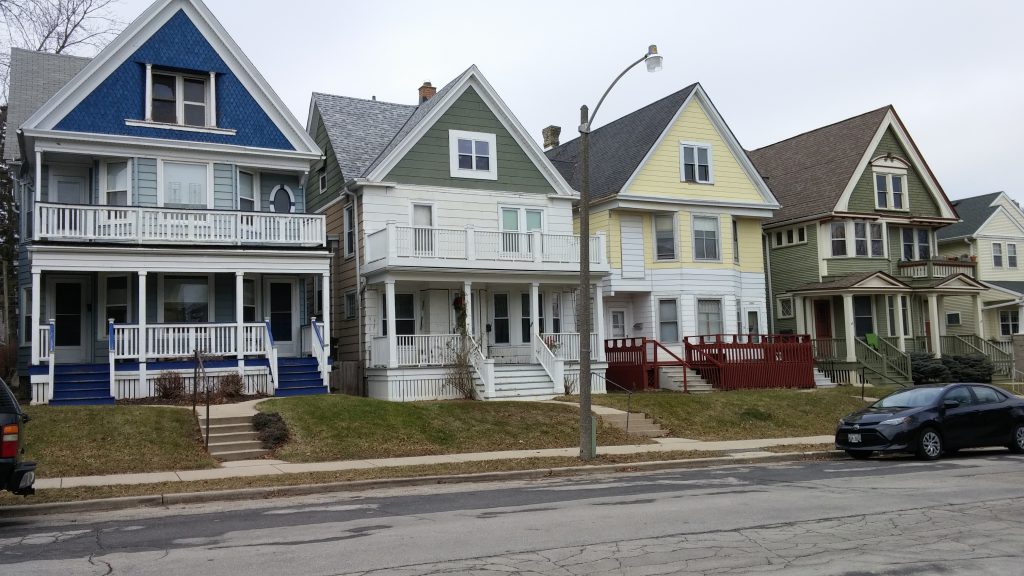Milwaukee 3rd Worst for Black Homeowners
Milwaukee's African American home ownership rate is 3rd worst, only Memphis, New Orleans rank lower
The Milwaukee metro area ranks third in the United States among cities with the lowest percentage of households where the primary owner is black, according U.S. Census Bureau data.
Just over 7 percent of homeowners in the Milwaukee area were African American in 2017, according to the latest data available. The median household income among African Americans in Milwaukee is $28,928.
The city’s metro area includes Waukesha and West Allis.
LendingTree, a Charlotte, North Carolina-based mortgage website, recently ranked the 50 largest metro areas in the country by the percentage of the black population that owns a home.
Memphis and New Orleans ranked first and second for the lowest percentage of black homeowners.
Milwaukee is a common example of a manufacturing town that attracted African Americans in the 1930s, 40s and 50s, said Jacob Channel, a research analyst who worked on the study.
“When World War I and World War II ended, and white people came back, they were forced out of jobs and never had an opportunity to establish the strong economic foothold like white Americans have had,” Channel said.
In January, the Brookings Institution found Milwaukee was the most racially segregated metro area in the U.S.
Milwaukee County has more than 240,000 African Americans, which is about 70 percent of the state’s total African American population, according to the 2010 census. About 40 percent of the city of Milwaukee’s residents are black. In the metro area, about 17 percent of residents are black.
Alderman Khalif Rainey’s district includes Milwaukee’s Sherman Park neighborhood. In 2016, he created the city’s Office of African American Affairs to improve the quality of life for black people living in Milwaukee.
“Seems like every day there is another new statistic about the lack of quality of life for African Americans in Milwaukee and the state of Wisconsin,” Rainey said Thursday.
When Rainey first heard Milwaukee ranked third in the nation for lowest homeownership by African Americans he said he was surprised. But after taking a few minutes to digest it, he said it made sense.
“When you think about the economic hardships and lack of family-supporting jobs for African Americans, I can see how we’re falling behind in homeownership,” Rainey said. “When you think about home ownership, it’s also a cornerstone of building wealth and how it impacts the economics of the black community as well.”
Channel agreed. He said despite how bad things appear, there are many programs available to everyone looking for a home, including loans through the Federal Housing Administration.
Take Root Milwaukee is also available — it’s a consortium of more than 40 community organizations, neighborhoods groups and U.S. Department of Housing and Urban Development-certified housing counseling agencies the help people achieve home ownership.
“What we have to do, as a society, government, whatever, is realize we have a problem, and then look at solutions to make it easier for disadvantaged people to build wealth,” Channel said.
Correction: An earlier version of this article incorrectly stated the percentage of African American homeowners in metro Milwaukee.
Listen to the WPR report here.
Milwaukee Ranks 3rd Worst In US For Black Home Ownership was originally published by Wisconsin Public Radio.






















Unfortunately that 7% statisitc is flatly wrong — the study says that 7.15% of all owner-occupied homes in the metro Milwaukee area are owned by black people. That’s completely different than saying 7.15% of black people in Milwaukee own their own homes. Total apples and oranges.
As for the study itself ranking us 3rd out of 50 it’s somewhat iffy in how it’s measuring. Here’s what it is measuring. It’s taking the percentage of people in the entire metro area who are black, and then comparing it to the percentage of owner-occupied houses in the entire metro area owned by black people. So let’s say a metro area is 40% black. If all else is equal and the same number of people live in every household, you’d expect 40% of all houses to be owned by black people. If all else is equal but only 37% of all houses are owned by black people, that gap is 3%. It’s that gap which they are measuring and ranking. Metro Milwaukee’s actuall numbers: 16.37% of all people in the entire metro area are black, 7.15 of all homes in the entire metro area are owned by black people. The gap of 9.22 points ranks Milwaukee as #3.
There are a few ways in which this data is somewhat shaky in the first place. First, anytime you rank by differeces in a percentage value you run the risk of misportraying the mangnitiude. In smple terms the 4 point difference between 84% and 88% is usually a lot less than the 4 points difference between 5% and 1%. Secondly they don’t seem to have done anything to correct for household size or age. Think about it — say 1 white person lives alone and 4 black people are in a four-person household. If both households own, that means blacks are 80% of the population (4 of 5) but own only 50% of the houses (1 of 2). And kids never own houses — if that black houseold is four adults because economics or lack of housing make them room together that can still be a marker of trouble. But if that bkack houshold is an adult and three kids living in the house the adult owns, this example shows a huge ownership gap when in fact all five people live in owner-occupied houses. Obviously those only extreme examples to illustrate, but using City of MIlwaukee stats (where the large majority of metro black people live) and Waukesha/Washington/Ozaukee stats (where ver few of metro black people live) the city has a larger household size and a significatly larger portion of residents under 18. Unfortunatley by not trying to account for these differences it makes output of the study somewhat iffy and problematic. If they had tried to measure households instead of people that would have helped.
None of this is to suggest that Milwaukee doesn’t have an issue with African-American home ownership, and to a great extent it’s simply one more correlated marker of our regions issues with minority poverity and segregation. But I’m not sure these number are accurate enough to really do a menaingful ranking — perhaps a better meaure would find us 12th of 50. or 2nd of 50 for that matter. But perhaps more importantly for the purpose of this story the “Just over 7% of black people in Milwaukee own their own homes” is flat-out wrong. And unfortunatley it’s the lead of the original WPR story and has been spreading on other outlets.
Thank you for pointing out the error. We have fixed that.
Appreciate the thoughts on the limited nature of the study. As you note, no matter how you slice it, Milwaukee has a problem with African American home ownership.
Thanks you for the correction/update! Certainly we *do* have a serious problem with poverty and segregation, and homeownership is a marker of those underlying issues.
It is useful that the deep historic roots of the crisis are cited in this piece. Had the city’s industrial economy not collapsed, it is possible that the effects of extreme segregation and structural racism would have been mitigated in ways that people could have lived decent lives. But it did collapse. And, whatever the complexities and metrics we cite, all it takes is a quick tour of the north side to see that these neighborhoods and the people who live in them have one overwhelming and prerequisite need: money.
You can argue that poverty produces violence and social disorder, or that violence and social disorder produce poverty. The reality is that the connection between them is a certainty, and that the disappearance of work and social isolation have resulted in the need for what one local philanthropy has referred to as a Marshall Plan for Milwaukee’s north side. Such a plan would require large infusions of money in the forms of living wage jobs, direct payments for specific purposes (what used to disparagingly be referred to as “welfare.”) and a range of integrated services and programs, all designed around the concept of community renewal and building healthy and peaceful communities. Housing, community beautification and building a circular economy are logical platforms for what could be a transformative undertaking.
Here is the bad news. There is no discernible will to undertake such a Marshall Plan. If Milwaukee has a fundamental problem, it is a deep-seated pessimism that anything substantive is possible in this area. And, decades of zero-sum thinking have produced a mindset that whatever anyone else gets must be coming out of my pocket. This attitude cuts across races, its most pernicious form being the white fear that one of “our” hard-earned tax dollars will go the the undeserving “them.” But, zero-sum thinking also poisons the chances for real progress in black communities as well. Then there is the key Republican constituency that is content with the status quo, among them, the Journal-Sentinel on-line commenters who think it’s all okay because “they’re killing each other.”
Tinkering won’t work. The problems and challenges are too great for that. The Marshall Plan image and vision are the right ones. That would involve government (City, County, and, God help us, even the State), community groups, the corporate sector’s biggest entities, the major universities, and the philanthropic and non-profit sectors all coming together and planning and investing large amounts of money in what were once – and could again be – healthy communities. All with both pessimism and false optimism replaced by a leap of faith that, with no guarantees of success, doing this could be the most important undertaking in the city’s history; and a national model, instead of Milwaukee being down in the gutter with Memphis and New Orleans. The leap of faith is the first step.